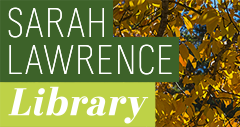To access this thesis, you must be either on the campus of Sarah Lawrence College or have a valid MySLC login and password.
Date of Award
5-2024
Document Type
Thesis - Campus Access Only
Degree Name
MSW/MA Social Work and Child Development
First Advisor
Emma Forrester
Second Advisor
Tricia Hanley
Abstract
The adult criminal justice system was created to protect the community and punish offenders. The juvenile justice system was created to protect the community and rehabilitate justice-involved youth. However, the juvenile system tends to be more punitive than rehabilitative. Over the years many alternatives to the traditional juvenile system have been proposed and utilized, including research-based restorative justice diversion programs. In lieu of punishment, a restorative justice approach provides offenders with a chance to repair the harm they have caused and to develop the skills and competencies needed to avoid repeating the crime — for example, a peer-led Youth Court where the goal is to offer justice-involved youth the opportunity to avoid obtaining a permanent record and be rehabilitated in the eyes of society.
Within the Youth Court program, there are two sets of youth participants: the mandated offenders and the volunteer high school students that fulfill the various roles within the courtroom. The students judge how the offender harmed their community/victim and sequentially how that justice-involved youth may repair that harm. This group of students is therefore given a lot of power. Through case notes, observation notes, and an anonymous survey this study aimed to explore the benefits of the Youth Court program for the clients (the justice-involved youth) and the student volunteers. However, due to a variety of limitations within the program, the data suggests that, other than clients receiving a cleared criminal record, the student volunteers are the true beneficiaries of the program.
Recommended Citation
Rietsch, Julia, "A Youth Court's Intentional and Unintentional Impact on Justice-Involved Youth and Student Volunteers: Who Truly Benefits?" (2024). Child Development Theses. 56.
https://digitalcommons.slc.edu/child_development_etd/56

